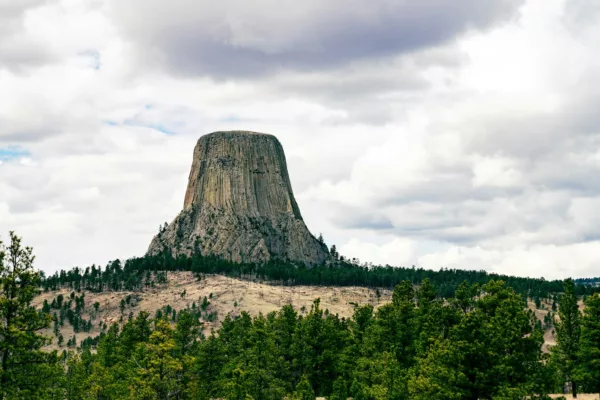Lost and Found: Rediscovering the Traditional Skill of Canoe-Poling on an Iconic Maritime River

It’s the crack of dawn and the sun pours golden rays over our campsite near Carleton Sur Mer, Quebec, when we awake to a view of the North Atlantic. We’d arrived in Quebec’s Gaspé Region late the night before after a long drive from our home in central Ontario.
Flung seaward into the Gulf of the St. Lawrence from the fringes of Canada’s largest province lies the Gaspé Peninsula. It’s renowned for striking beauty, salmon rivers and a unique French Canadian maritime culture. We’re here for all of that; however, it’s the specific nature of the region’s rivers that more acutely piqued our interest.
With two 17-foot Prospector canoes on the roof of our small SUV, we continue past quaint towns, dotted with clapboard homes, before we turn north to head deep into the mountainous interior of this 31,075-square kilometre peninsula.
En route, we pick up our shuttle driver, Joel at ZEC Bonaventure. ZEC is Quebec’s wildlife management arm and can help facilitate services in their respective areas, so we pick up our Atlantic salmon fishing licences while there too. We’re headed for kilometre 60 of the Gaspé’s Bonaventure River, where we’ll start our three-day trip to the ocean.

Speaking about as much English as I do French—not much—Joel helps us navigate the logging roads and narrow forest access roads to reach our put-in using quasi-sign language.
Unloading near the put-in, we take the canoes off the roof along with two long poles—before Joel drives away, I try to explain to him that we plan on travelling using the traditional skill of canoe poling. He looks surprised.
“C’est pour les experts,” he cautions. We understand him, and I’m not sure that’s a good thing. You see, the character of the Gaspe’s rivers lend themselves heavily to poling canoes rather than paddling them. This is particularly true for this early September adventure because the river’s water levels are unseasonably low.
My wife Tori and I have almost no experience poling a canoe. Moreover, we have never poled moving water, let alone whitewater, and a plethora of both lays densely scattered in front of us along our only route out of here. You might say we are jumping right into it. As people who have an interest and respect for traditional skills, it seems a natural thing for us to try out, plus it looks like a lot of fun—but we’re concerned that we’re biting off more than we can chew.
What is poling anyways, and why do it? Poling is the act of standing in a canoe and controlling your motions with a long pole by pushing off bottom, or by “snubbing,” which is the act of planting the pole on a river bottom in front of you to slow your canoe down in the current.

Nowadays, canoe poling is mostly limited to the northeastern U.S. and Canadian Maritimes where the rivers are broad and shallow—perfect poling rivers that even demand the use of a pole at times. At one time however, the practice was much more widespread and often the most commonly used method for negotiating shallower rapids across Canada. Poling is also an excellent yet challenging method for travelling upriver (and even up rapids). The Voyageurs used to pole when travelling upriver and would pole many miles each day on the shallow tidal flats of James Bay, where it’s too shallow to sink a paddle’s blade.
Standing in a canoe gives you an excellent perspective and you can see upcoming rocks much more easily than when sitting. Furthermore, a long pole allows you to slow down in a hurry, or even stop dead in your tracks to quickly manoeuvre and avoid mid-rapid rocks. Additionally, while canoeing slowly transformed from a compulsory travel method to a recreational pursuit, and access to rivers by floatplanes, trains and roads became a more and more prevalent option, the challenge of travelling upriver became a fringe pursuit. Because of these things, the skill of canoe poling fell by the wayside in much of its traditional range.
We are each solo-poling our own 17- foot canoes; when the water is low, longer canoes offer more water displacement and float higher, meaning you’ll miss more rocks, particularly with the reduced payload that soloing brings. With the water level as low as it is, it’s a mandatory decision.

Under steel grey skies, we put in on the Big East River, an ancillary tributary of the larger Bonaventure and we’re immediately faced with a tough challenge. The nature of the put-in leaves no other option than to start out in swift current right off the hop! Moments after jumping in my canoe and setting off, I narrowly miss a couple boulders. Tori isn’t so lucky—she tanks a boulder head-on and takes a spill, landing flat on her butt inside the canoe. Fortunately, she’s able to keep the boat upright and get out of harm’s way—but it’s not an ideal start.
“Maybe we should have practised,” she yells to me over the rush of the next shallow, boulder-strewn rapid. At the bottom of the long rapid I’m sweating and I watch Tori nail it, taking a more challenging route than I.
I continue on, heading under an overhanging tree and I push hard off the bottom to descend a swift with speed. I raise the pole over my head when I reach the bottom, look back at Tori and cheer! I’m already having a blast.
With a few kilometres behind us, the clouds clear and the sun comes out strong giving us a perfect early fall day with a tinge of crispness in the air. Deep pools in the Bonaventure are truly surreal in their colour and clarity. They either look blue where they reflect the sky, or green where they reflect the trees; at times so clear that it looks like there’s no water there at all. I have to do a double-take when for a moment it appears Tori’s canoe is floating in the air, casting a perfect shadow on the boulder-strewn river bottom three metres below.

We’re having a lot of fun but it’s obvious that although we’re doing well for our first time poling, we have a lot to learn. We’re constantly trying to improve our skill and trading tips that we learn in real-time as we pole side-by-side. Hopping further back in the canoe so it’s trimmed a little stern-heavy helps it go straighter in the flat sections; a little pry through the water with the pole after every push helps keep you straight in much the same way as will a J-stroke.
Just before I run a class II wave train, we see our first salmon. Shining and silver, it leaps out of the water, landing with a splash. This beauty must have been 15 pounds or more. So we stop and fish for longer than we should while burly salmon leap out of the water in front of us, tantalizing us with their size and beauty— but they don’t take a fly.
Our final day on the Bonaventure is cool and overcast, and we have 40 kilometres in front of us before reaching our end point at the sea. A persistent cool rain constantly coaxes us onwards as we have to keep moving to fight off the chill. The river is wide and we lean on our poles using our body weight to push hard through a long stretch of swift river that’s far too shallow to sink a paddle blade into, yet we fly with the poles. Concerned we’re not going to make it before dark, the river’s volume increases and Tori solos a deep class II with a paddle. We finally reach the ocean late in the evening after a long hard day.
The trip was a lot to bite off considering our lack of experience but it feels good to know that our judgment in our abilities to learn the new skill were bang-on. Poling is a great skill to have in your arsenal; I plan to take a stowable, two-piece aluminum pole along on all my future river trips.
Keep reading:
More epic adventures on Explore-mag.com
When Adventure Goes Wrong: Evac on the East Pukaskwa River
This Artist Skis to Paint Beautiful Canadian Destinations














